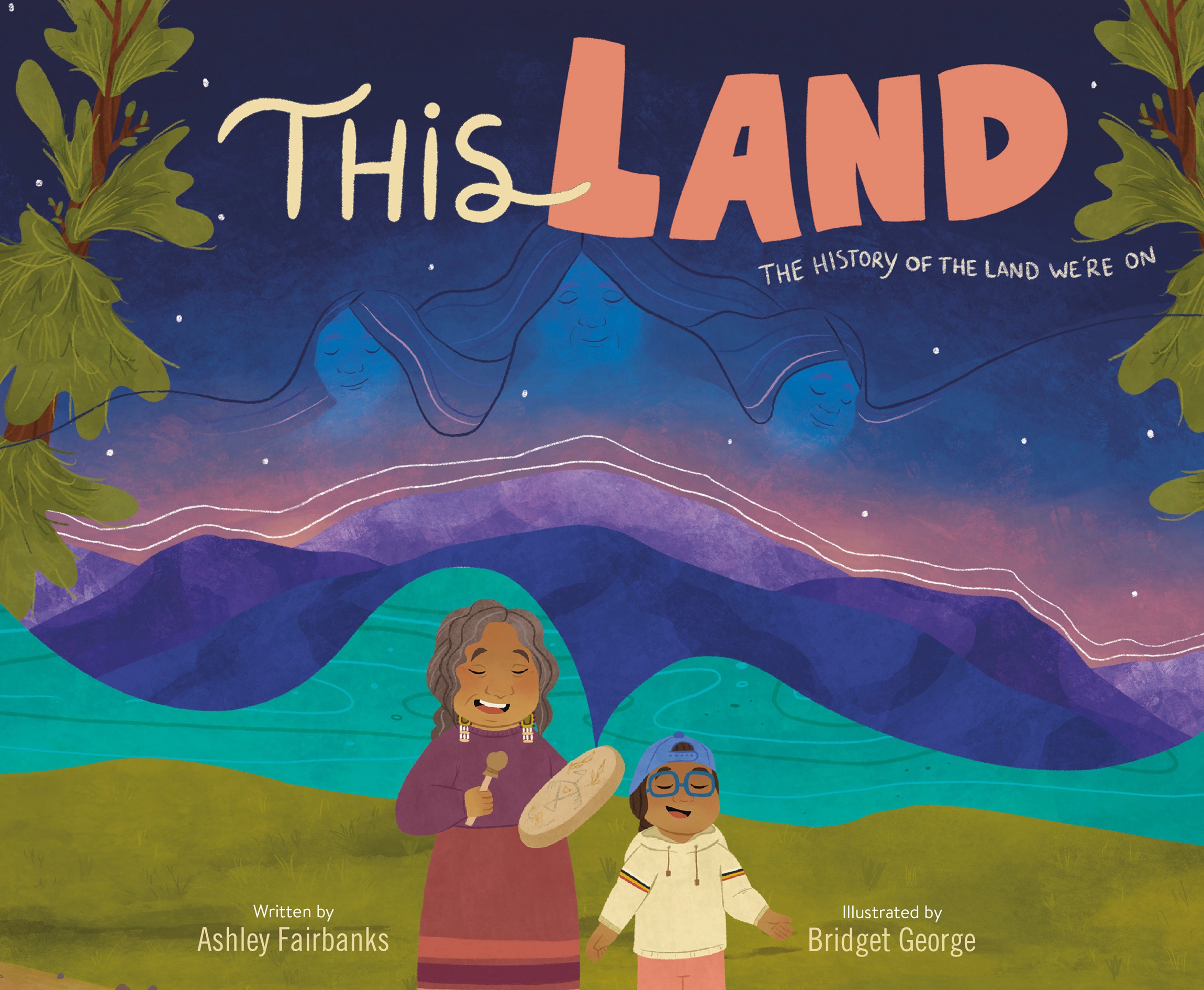This Land: The History of the Land We’re On

This Land: The History of the Land We’re On
This is my house.
I live here with my family.
Before us,
another family lived here…
And another
And another.
Before our house was here, there was
another family, with a different kind
of house - a wigwam.
Young children will get a history lesson delivered with love, not a lecture, in this pleasantly informative picture book by Texas-based writer and digital strategist Ashley Fairbanks and illustrated by Bridget George.
Fairbanks, who is Anishinaabe originally from Minnesota, offers young children a tangible way to understand the displacement of indigenous peoples and their current situation.
But when people came here from Europe,
they forced most of those families to leave their homes…
But despite everything
done to them, many Native
American people still live in
my city today. Like my friend
TJ. He’s Anishinaabe, and he
lives with his grandma.
The main character, a little girl learns from TJ’s Noko (grandmother in Anishinaabe) that indigenous peoples lived all over North America. When the little girl’s family goes on road trips, she pays attention to which tribe lived in the places she visits, an example that can be copied by real children, with parental assistance:
At the Grand Canyon, I learned that either tribes call it home: the Havasupai, Yavapai, Paiute, Hopi, Zuni, Hualapai, Apache, and Diné.
Learning the names of the tribes can prompt further research into each of their histories.
With spare text, Fairbanks has delivered an effective history lesson that will stick with children, who have a sense of curiosity and a sense of social justice.
This land all has history.
Even my backyard.
The pleasant illustrations of London, Ontario-based and also Anishinaabe Bridget George complement the story well. The children and adults are drawn with rounded bodies to make them look friendlier. Except for the unhappy characters from the past who were put off their land, George’s characters smile and look optimistic. George chooses deep colours (purples, blues and greens, which add warmth to the pictures and stir an emotional attachment to the places she depicts. The pictures of popular tourist destinations on postcards at the end of the book, such as the Golden Gate Bridge, New York and others, are labelled with the name of the tribes that originally lived there - an appropriate touch.
This Land: The History of the Land We’re On is a simple story, well-told. Teachers will appreciate having this book in a unit about indigenous lands. Families, both indigenous and non-indigenous, can use it to learn together.
Winnipeger Harriet Zaidman moved into a new suburb as a child and watched long grasses flowing back and forth, back and forth, until, finally, they were all dug up and replaced with streets and houses. She always wondered who had been there before. She still lives in the area and, happily, when she looks out her window now, she sees those same long prairie grasses that she and other residents have replanted in their yards. Harriet writes novels for young people.
